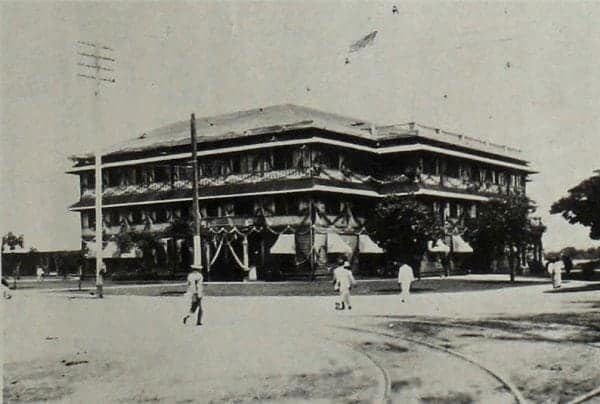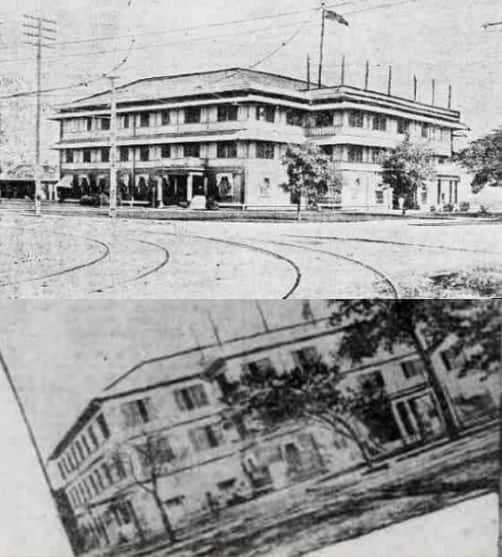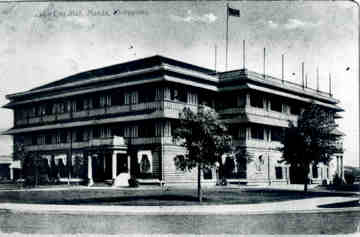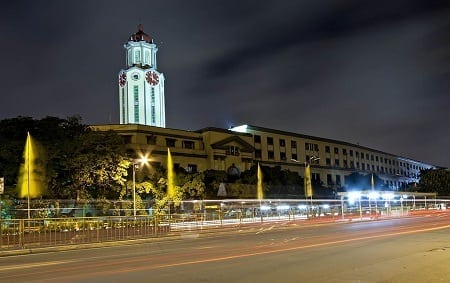Rare Photos of Manila City Hall from 100+ Years Ago

You know you’re in Manila when that iconic clock tower emerges from the hustle and bustle to tell you the exact local time.
The tower, as most of us already know, is the crowning glory of the City Hall–a historic building that saw Manila’s golden age and how it went downhill from there.
Strategically placed at a junction which leads to three bridges (namely, Quiapo, Santa Cruz, and Binondo), the Manila City Hall houses the mayor’s office and other essential departments of the city government. It’s a common knowledge that the present-day City Hall was just a reconstruction of the 1930s building destroyed during WWII.
However, the original Manila City Hall is quite older than most people think.
Also Read: 12 Random Facts About Manila That Will Blow Your Mind

Manila City Hall, Minus the Clock Tower
In 1901, the original Manila City Hall was built at Concepcion Street (now Natividad Almeda-Lopez) in Ermita–not too far from the present-day building in Padre Burgos Avenue.
Also Read: The Oldest Known Photos of the Philippines Ever Taken
According to the book “Landmarks of Manila, 1571-1930” by Visitacion R. De la Torre, the three-story City Hall–which was made of Oregon pine–“stood then on filled ground, taking up one-third of the area occupied by the present building.”
It was constructed under the administration of Arsenio Cruz Herrera, the first Filipino mayor of Manila.
After several decades, the wooden structure had fallen into decay.
In 1932, for instance, then City Engineer Santiago Artiaga had the floor reinforced and prevented people from overcrowding the hall and corridors because “the structure supporting the hall where the sessions of the municipal board are held was on the verge of collapse.”

Wrong Timing
To save it from imminent deterioration, the old building had to be demolished and replaced by a new one. Designed by architect Antonio Toledo, the brand new edifice–now adorned with a hexagonal clock tower–was finished and inaugurated just before the outbreak of WWII.
READ: 20 Beautiful Old Manila Buildings That No Longer Exist
Needless to say, the new Manila City Hall was built at the right place but at the wrong time.
It became one of the casualties during the Liberation in February 1945. Through the collaboration of the United States Army and the city government, however, the Manila City Hall was able to rise from the ashes. The reconstruction project brought a new building with a “total floor area of 8,422 square meters, some 200 rooms, and uniform windows all over.”

Moreover, the addition of the east wing enabled the City Hall to accommodate other offices. The Big Ben-inspired clock tower, on the other hand, had earned the moniker “international clock” from frustrated Manileños because it often displayed four different time zones.
Thankfully, it went through rehabilitation in 2000 when then-Mayor Lito Atienza found the dysfunctional clock “embarrassing” for it was also “a reflection of the performance of the city government.”
Related Article: 11 Awesome Then & Now Photos of Metro Manila
Indeed, the Manila City Hall is a symbol as well as a reflection of the local leadership. But while this famous edifice has successfully transformed into a concrete structure, the same amount of change cannot be said for the city government.
References
Aning, J. (2000). City Hall clock tells right time. Philippine Daily Inquirer, p. A17. Retrieved from https://goo.gl/H0KJ2l
De la Torre, V. (1981). Landmarks of Manila, 1571-1930 (pp. 19-20). Filipinas Foundation.
manila.gov.ph,. Manila City Hall. Retrieved 28 July 2015, from http://goo.gl/lBkRPt
FilipiKnow
FilipiKnow strives to ensure each article published on this website is as accurate and reliable as possible. We invite you, our reader, to take part in our mission to provide free, high-quality information for every Juan. If you think this article needs improvement, or if you have suggestions on how we can better achieve our goals, let us know by sending a message to admin at filipiknow dot net
Copyright Notice
All materials contained on this site are protected by the Republic of the Philippines copyright law and may not be reproduced, distributed, transmitted, displayed, published, or broadcast without the prior written permission of filipiknow.net or in the case of third party materials, the owner of that content. You may not alter or remove any trademark, copyright, or other notice from copies of the content. Be warned that we have already reported and helped terminate several websites and YouTube channels for blatantly stealing our content. If you wish to use filipiknow.net content for commercial purposes, such as for content syndication, etc., please contact us at legal(at)filipiknow(dot)net

